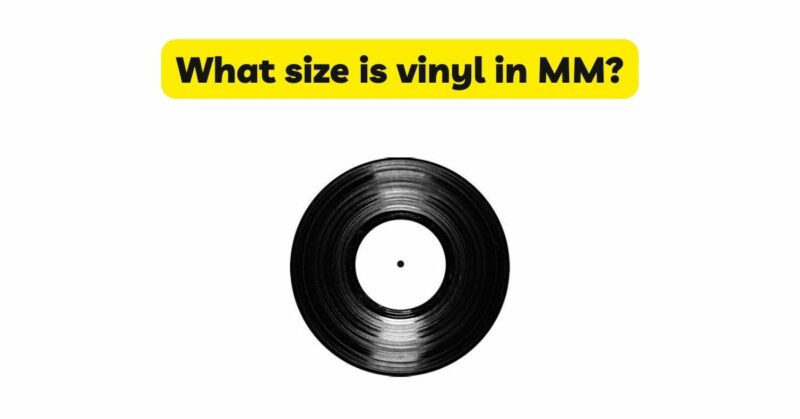Vinyl records have made a remarkable comeback, captivating music enthusiasts with their warm analog sound and tactile appeal. Understanding the dimensions of vinyl records in millimeters (mm) is crucial for proper storage, playback, and appreciation of these cherished music formats. In this article, we will delve into the size of vinyl records, exploring their measurements in millimeters and discussing the significance of these dimensions in the vinyl record experience.
- The Importance of Vinyl Record Size in Millimeters: The size of a vinyl record in millimeters is essential for various aspects of the vinyl record experience, including storage, playback equipment compatibility, and handling. Understanding the dimensions in millimeters allows for accurate measurement and assessment of vinyl records, ensuring optimal usage and preservation.
- Standard Sizes of Vinyl Records: Vinyl records come in several standard sizes, with the most common formats being 12-inch, 10-inch, and 7-inch records. Each size offers distinct playback characteristics and is associated with specific types of music releases.
a) 12-Inch Vinyl Records: The standard size for a 12-inch vinyl record is approximately 300 mm in diameter. This size allows for longer playing times per side, larger grooves, and improved sound quality. The diameter measurement in millimeters ensures compatibility with turntables and playback equipment designed for 12-inch records.
b) 10-Inch Vinyl Records: The standard size for a 10-inch vinyl record is approximately 250 mm in diameter. The smaller diameter of 10-inch records provides a shorter playing time per side compared to 12-inch records. The measurement in millimeters helps in selecting appropriate turntables and tonearms designed for 10-inch records.
c) 7-Inch Vinyl Records: The standard size for a 7-inch vinyl record is approximately 175 mm in diameter. 7-inch records, also known as singles, have a shorter playing time and are commonly collected for their historical and cultural significance. The measurement in millimeters ensures accurate identification and compatibility with turntables and playback equipment designed for 7-inch records.
- Groove Dimensions and Audio Fidelity: The dimensions of vinyl records’ grooves contribute to the audio fidelity and overall sound quality. The width and depth of the grooves directly affect how the stylus tracks the record, capturing the audio information. While the groove dimensions are not typically measured in millimeters, understanding the overall size of the record in millimeters helps to assess the spacing and depth of the grooves in relation to the playback equipment’s stylus.
- Handling and Storage Considerations: Knowing the size of a vinyl record in millimeters is crucial for proper handling and storage. Vinyl records should be handled by their edges to avoid fingerprints and potential damage to the playing surface. When storing vinyl records, selecting appropriately sized sleeves or jackets ensures a snug fit and protects them from dust, scratches, and warping. The millimeter measurements aid in choosing the correct storage solutions.
- Compatibility with Playback Equipment: The millimeter measurements of vinyl records are instrumental in ensuring compatibility with turntables, tonearms, and other playback equipment. Turntables and tonearms are designed to accommodate specific record sizes, ensuring proper tracking and playback performance. By understanding the size of a vinyl record in millimeters, enthusiasts can select the appropriate playback equipment for their record collection.
- Custom and Non-Standard Sizes: While standard sizes are prevalent, it is worth noting that custom and non-standard sizes of vinyl records exist. Some niche genres or limited edition releases may feature unique sizes or shapes, providing collectors with a distinct visual and auditory experience. These non-standard sizes or shapes may deviate from the common millimeter measurements, adding a touch of uniqueness to vinyl record collections.
- Display and Visual Presentation: Understanding the size of vinyl records in millimeters aids in their display and visual presentation. Larger records may be prominently displayed on shelves or mounted on walls, showcasing the album artwork and adding visual appeal to a music collection. Smaller records can be creatively arranged or presented in specialized frames, emphasizing their unique dimensions.
Conclusion: The millimeter measurements of vinyl records are crucial in various aspects of the vinyl record experience, including storage, playback equipment compatibility, handling, and visual presentation. Understanding the size of vinyl records ensures proper selection of storage solutions, playback equipment, and handling techniques. As vinyl records continue to captivate music enthusiasts, the millimeter measurements remain fundamental in the enduring appeal and appreciation of these cherished music formats.


